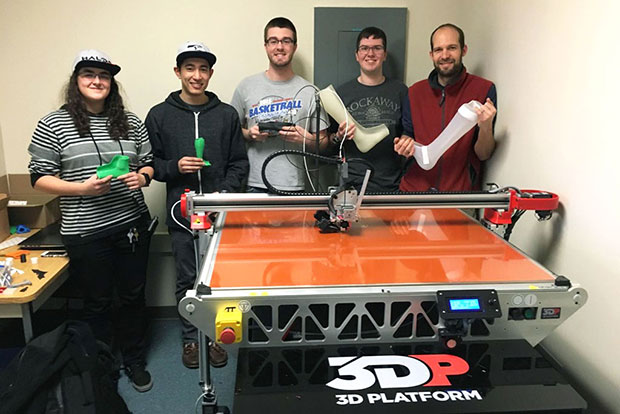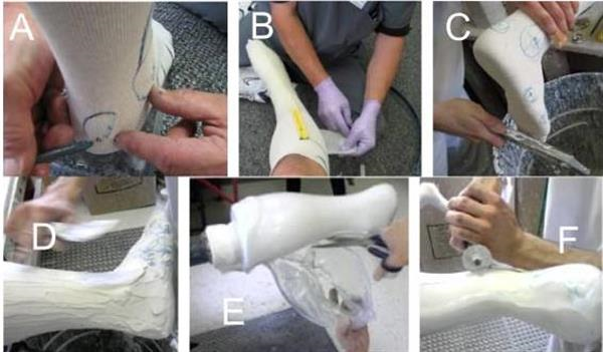Transforming Ankle Foot Orthosis with 3D Printing

Latest News
May 1, 2017
Prosthetics and orthotics are necessary for a variety of patients, but the current manufacturing process of these medical devices are time-consuming and costly for both patients and hospitals. Thanks to the large format 3D printing technology enabled by the 3D Platform and research effort by students at Gonzaga University, patients soon can expect high-quality 3D printed orthotics that are affordable and produced within an optimized time frame.
Traditional Ankle Foot Orthosis Costly
An ankle foot orthosis (AFO), is a brace that is designed to treat foot and ankle disorders in children. AFO provides a stable base of support for a child’s lower extremities, thus allowing a child to develop the process of walking and balancing. The current process of fabricating an AFO consists of several heavily involved steps including scanning, molding, vacuum heat forming, and form and fitting. This process normally takes as many as four weeks and cost as much as $2,000 for most patients.
Seeing the need to improve the process of designing and constructing ankle foot orthosis (AFO) to cut time and cost, in late 2015, a group of students at the Gonzaga University started to research and develop a 3D-printed rapid prototyping process for fabricating AFO. The goal was to “create a simple, easily 3D printed AFO with the best composition and geometry to meet strength and comfort requirements for patients.”
3D Printing High-Quality, Affordable AFO
Creating a simple, easily 3D printed AFO with the best composition and geometry to meet strength and comfort requirements of the patients is Gonzaga University researchers' top priority. First, researchers used a 3D scanner to collect a patient’s ankle and foot measurement data, then a 3D model is designed for 3D printing the AFO. In addition to 3D printing the AFO design, researchers also tested several types of 3D printing materials (including polylactic acid or PLA, polypropylene, carbon fiber PLA, PETG, nylon) to help determine optimal materials for 3D printed AFOs. 
“We want to 3D print large braces (up to 18 in.), and we need to print with a variety of materials as we research the best design for the braces,” says McKenzie Horner, one of the researchers at Gonzaga University. “3D Platform helped solve the problem by providing a versatile large-format 3D printer that helps us with our materials research and AFO printing. We were able to print a full-scale proof of concept immediately, and the open platform software capabilities allow us to prepare a print easily from a doctor’s 3D scan of a patient’s leg.”
A New Era for Ankle Foot Orthosis with 3D Printing
Multiple material choices
After extensive testing on the selected 3D printing materials’ tensile strength (Mpa), fatigue rating, printability, and repeatability, researchers successfully identified that PLA and PETG are the most optimal choices for use of 3D printing AFO, for both materials meet strength and functionality requirements while minimizing the material cost.
Four weeks vs. two days
By 3D printing AFOs, researchers were able to cut down production time from up to 4 weeks to 2 days. The setup of the 3D model can take a matter of minutes, with the 3D print taking up to 16 hours on a larger model, the 3D printing process can cut production from a few weeks to a matter of hours.
Significant Lower Cost AFO
3D printed AFO also costs significantly less to produce, thanks to the reduction of cost in materials and labor. Unlike the traditional heat molding process that has excess material wasted after trimming away from leg hole, 3D printing only uses the required material.
Students at Gonzaga University will continue to explore the possibilities of 3D printing AFO with more materials, and patients soon can expect high-quality 3D printed orthosis that is affordable and produced within an optimized time-frame.
More info: 3D Platform
Subscribe to our FREE magazine, FREE email newsletters or both!
Latest News
About the Author
DE’s editors contribute news and new product announcements to Digital Engineering.
Press releases may be sent to them via [email protected].










